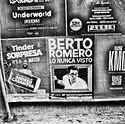I am not up on that particular model, but I presume it is a copy camera. They were typically vertical only when they were big, and were usually fitted into a wall between the copy room and the dark side camera darkroom.
The film backs were often large, to 24" or maore to make for a full newspaper screened negative for printing pictures. Backs were often pivot hinged to allow you to load them horizontally with a vaccuum board that enables you to suck the neg, and maybe the screen too, to the film back.
The copy room side often had the lens with long focal lengths to cover large negatives, and asociated small apertures, and tables of curves to compute the bellows factor for adjusting the aperture base on where the copy board was positioned.
Small apertures led to the need for lots of light to evenly illuminate the copy baord 4 x1kw of xenon lamps was not unusual.
Oh, and in the darkroom side, there would likely be a pre-flasher lamp, to give a small uniform exposure to the film before the copy back was swung vertical and locked in place. This got the density of the negative from the main exposure off of the toe of the H-D curve so the respnse would be more linear, which can be important for screened copy dot density.
So don't be surprised by two differnt timers - one for the copy lights and one for the preflash light.
The lenses might be large enough they might not have shutters, and instead relied on the copy room being blacked out when other than the copy lights were turned on.
That is my brief introduction to copy cameras - some of which were the size of small cars.












